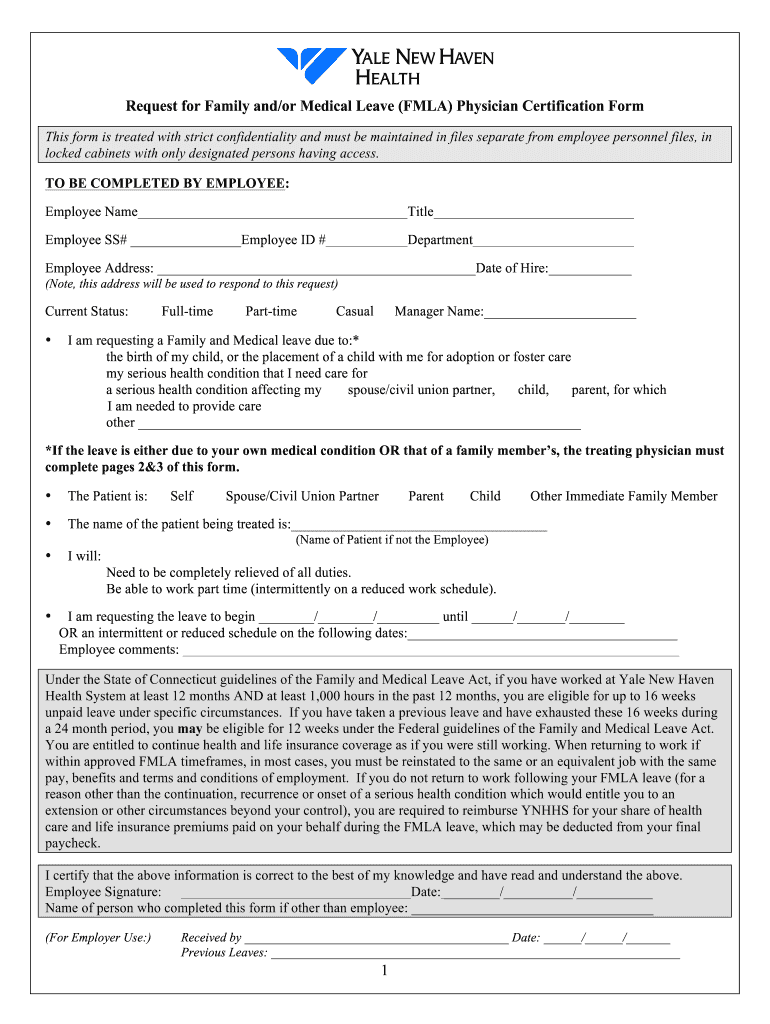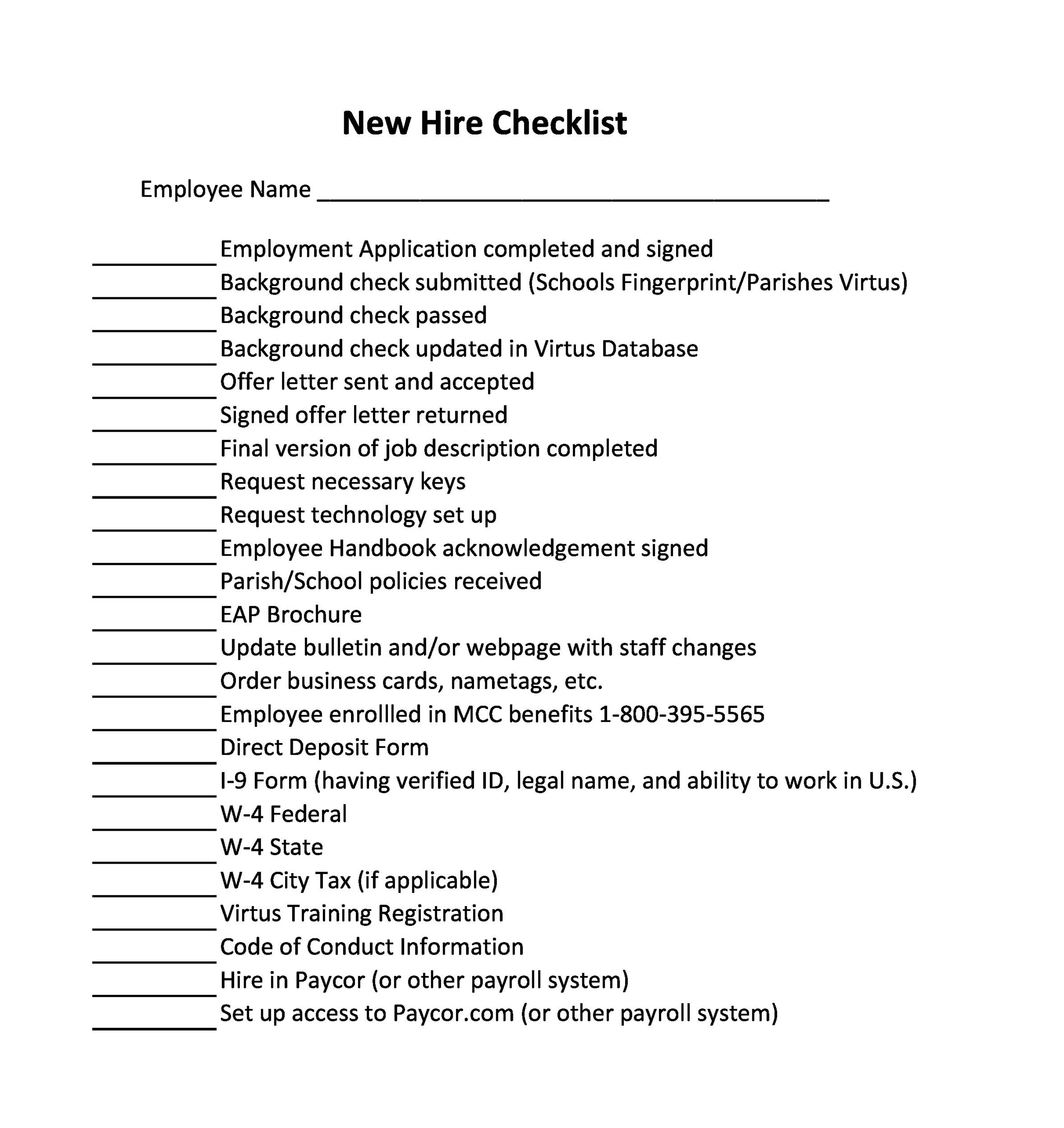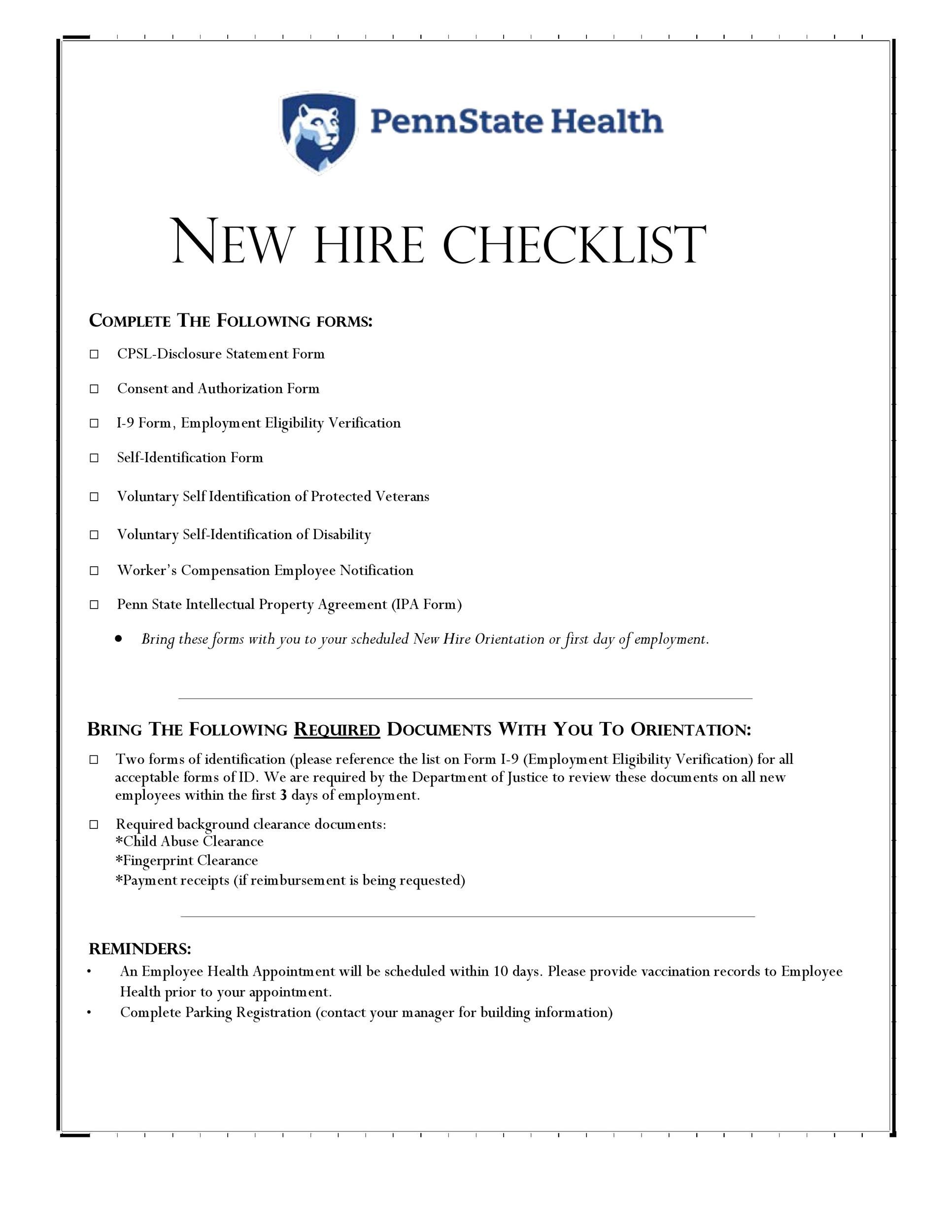How Long to Complete Employee Paperwork: A Guide

Understanding the timeline for completing employee paperwork is crucial for both employers and employees. This guide offers detailed insights into the typical duration of processing various employment-related documents, ensuring you're well-informed on what to expect and how to streamline the process.
The Role of Employment Documentation

Employment documentation includes a range of forms and agreements necessary to formalize the relationship between an employer and an employee. Here are some common types:
- Employment Contract: An agreement outlining the terms of employment.
- Employee Handbook: Contains company policies, procedures, and expectations.
- Tax Forms: Such as W-4 or W-9 for the United States.
- Benefits Enrollment: Forms related to health insurance, retirement plans, etc.
- Direct Deposit Authorization: For payroll purposes.
- I-9 Form: Verifies employment eligibility and identity in the U.S.
🌟 Note: The exact documents required can vary by country and company size, but these are generally universal.
Timeline for Onboarding

The process of onboarding new employees and the associated paperwork can take varying amounts of time:
- Pre-employment Screening: Background checks and references can take 1-3 days but might take up to 10 days in some cases.
- Offer Acceptance and Paperwork Submission: Typically, new hires have a few days to a week to return signed employment contracts and other initial forms.
- Completing Onboarding Forms: This step usually takes 1-3 days, depending on the employee’s promptness and the complexity of the forms.
- Orientation: Often lasts half a day to a full day, where employees might complete additional paperwork.
- Benefits Enrollment: Can take from a few minutes to a couple of hours, with deadlines set by the employer.
- I-9 Form Completion: Must be completed within 3 business days of the employee’s start date.
📝 Note: Delays often occur due to employee procrastination, incomplete information, or the need for clarifications.
Strategies to Speed Up Paperwork

Here are some tips to expedite the paperwork process:
- Preparation: Ensure all documents are readily available and know the information required.
- Electronic Forms: Utilize electronic signatures and digital submissions to minimize postal delays.
- Clear Instructions: Provide concise, clear guidance on what each form entails and how to complete it.
- Deadlines: Set firm deadlines for paperwork completion to keep the process moving.
- Follow-ups: Send reminders and follow-ups to employees who are late in returning paperwork.
- Streamlined Systems: Implement an HRIS or applicant tracking system to manage documents efficiently.
🕰 Note: Proactive communication is key to ensuring all paperwork is completed in a timely manner.
Implications of Delays

Delayed paperwork can have several consequences:
- Payroll Issues: Employees might face delays in receiving their first paycheck.
- Benefits Enrollment: Late submission can result in missed open enrollment periods or coverage.
- Legal and Compliance Issues: Incomplete paperwork can lead to penalties or legal action for non-compliance.
- Company Reputation: Slow onboarding can affect an organization’s image and employee satisfaction.
Legal and Compliance Considerations

Employment documents have legal implications, requiring careful handling:
- Privacy Laws: Ensure confidentiality of personal information.
- Fair Labor Standards: Adhere to minimum wage, overtime, and child labor laws.
- Anti-discrimination: Avoid collecting information that could lead to discrimination.
To summarize, understanding the typical timeframe for completing employee paperwork is essential for a seamless onboarding process. Delays can impact an employee's start, their benefits, and the employer's compliance with labor laws. By implementing effective strategies and maintaining open communication, both parties can ensure that paperwork is completed efficiently, paving the way for a successful employment relationship.
What happens if an employee misses the deadline for paperwork?

+
Employees might experience delays in starting work, benefits enrollment, or payroll issues. Employers could face legal and compliance issues, or they might need to extend the deadline, causing further delays in the onboarding process.
How long does it take for an employee to receive their first paycheck?

+
Typically, employees receive their first paycheck after their first pay period, which can take 1-2 weeks. However, delays in paperwork can extend this time frame, potentially up to several weeks or longer.
Are electronic signatures legally recognized?

+
Yes, in many jurisdictions, electronic signatures are as legally binding as handwritten signatures, provided they meet certain criteria for authenticity and intent to sign.
What information do new hires typically need to provide during onboarding?

+
New hires usually need to provide personal information like contact details, tax ID numbers, bank details for direct deposit, proof of eligibility to work, and sometimes previous employment references or educational qualifications.